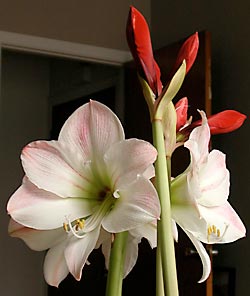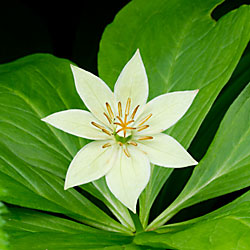 Flickr / Steve Drolet
Flickr / Steve Drolet
An apple blossom amaryllis in bloom.There is no better way to brighten your home during winter than growing some bulbs indoors. Here’s a good story from nj.com to get you started:
After the Christmas tree comes down and the wreaths are tossed, a long spell of bleak days looms ahead with nary a hint of green in sight. Fill the void with winter’s brightest bulbs and you won’t have to pine for vibrant, living color.
The key species for winter bloom are two showy flowers: amaryllis and paperwhites narcissus. Both are easy-to-grow windowsill plants offering quick, if not instant, gratification. Delicate paperwhites can bloom in as little as four weeks and gaudy amaryllis in six.
Unlike familiar spring-flowering bulbs, including tulips, daffodils and hyacinths, these two species don’t require a long period of cold temperatures to trigger bloom. Native to regions of the Southern Hemisphere, they are programmed to flower on an upside-down schedule in our winter months.

